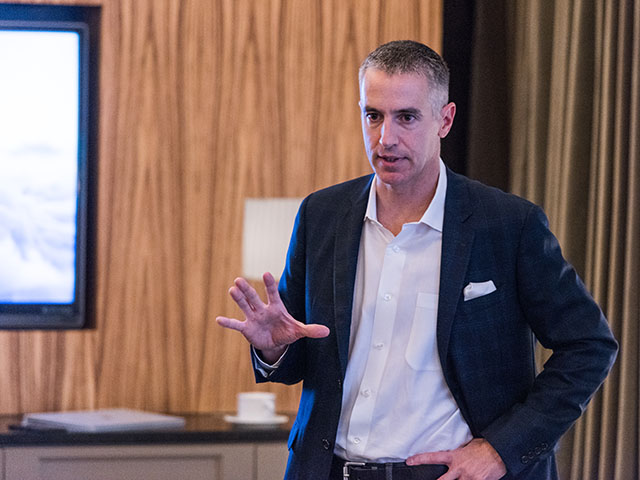Microsoft offers in-depth look at its strategy
By Ryan Noik 9 November 2016 | Categories: news
To get an indepth behind the scenes view of Microsoft in action, TechSmart was invited to spend some time with the company from its headquarters in Redmond, Washington. Ryan Noik reports back.
Microsoft is a company that is no doubt well known by anyone who has used a computer in the last thirty years. Thus, when the opportunity arose to attend its Underground Tour in Redmond, Washington arose, I was intrigued, to say the least, especially since it has been a company I have followed for more than a decade.
I thought I knew Microsoft well enough, but I was to be very pleasantly surprised.
The tour, which was attended by ten journalists from as many countries, spanned two packed days, and encompassed deep dives into pertinent topics, including cloud and security, research and development, innovation and the future of technology. It was also accompanied by several behind the scenes demos, as we were shown Microsoft’s Garage (or innovation lab), the process behind how its products are designed and manufactured, and the HoloLens in action, to name a few.

Unexpected beginnings
The tour began in a room that most resembled a spacious and elegant lounge, replete with comfortable couches, a home theatre system and warm lighting fixtures. This was not by accident, but rather meant to reflect how central technology has become to our lifestyles, as well as what workspaces in the 21st century can look like.
First on the agenda was an overview of Microsoft’s overarching vision, its mission and how the company has changed. While it may well have been said that in times past, Microsoft was billed as being a software, and subsequently hardware, company first and foremost. What rapidly became clear is that this is a company that has been revitalised under Satya Nadella, Microsoft’s CEO. Innovation is the driving force in the 21st century, and it is a game that the company is embracing wholeheartedly.
Tim O’Brien, GM of global communications at Microsoft, explained that these days, the company’s stated mission is to “empower every person and organisation on planet to achieve more”, with the emphasis being on empowerment. He added that mobility and cloud first weren’t Microsoft’s strategy, but rather shaped its worldview.
“Mobility permeates everything we do - people don't go to work anymore, they just do the work,” he pointed out. Cloud meanwhile, is akin to the control centre for both consumer and enterprise content, essential to each and the foundation of the digital world in which we live.
“From our design choices, to the markets we choose to enter, and the customers to serve - mobility and cloud are the anchor points. Our competitors live in this world too. They may have different successes and failures but it is still the reality of the world,” he elaborated.

Tim O'Brien, general manager for global communications, Microsoft
Bold ambitions
Continuing, O’Brien explained that the company’s ambitions centre around three arenas – making computing more personal by reducing the complexity associated with it, building intelligent cloud platforms and reinventing productivity.
He elaborated that with regards to personal computing, there is much attention being paid to moving beyond the traditional keyboard and mouse interface, towards other ways of interacting with one’s devices. Furthermore, he pointed out that people no longer restrict themselves to using a singular computer, but rather progress from one device to another during the course of the day, engaging with many as five different computing form factors.
Microsoft’s focus, however, is to make the experience more personal, as its users go from using their smartphone to notebook to tablet over the course of the day. Augmented reality and virtual reality, and what the company refers to as mixed reality, is quite literally adding another dimension to what computing means in the digital world. One example given is the use of augmented reality and HoloLens at the Case Western Reserve University, where students are now able to learn about the human body in a three-dimensional way.
Getting smarter
Moving onto the next cornerstone – building intelligent clouds – O’Brien pointed out that cloud has lived up to its initial promise of offering greater agility and cost savings. However, it also meant that we now have a lot more data at our disposal than ever before. With the cost of acquiring data being zero, and storage getting cheaper, this has resulted in us having more data than we know what to do with. This means that analytics and intelligence can come to the fore, setting the stage for artificial intelligence that only becomes smarter the more data it is given.
The final arena central to Microsoft’s ambitions moving forward, namely productivity, may well be the one that Microsoft is most easily associated with.
He explained that Microsoft didn’t view productivity as being solely about encouraging people to work harder. Rather, the aim of reinventing productivity is to give people back their “most precious resource”, time, and enable them to get the most out of both their work and leisure pursuits.
A poignant example of this in action is how the company has empowered the Special Olympics, by modernising its management. Previously, it had been paper based, which meant athletes would have had to wait days or weeks to learn if they had won a world record. By automating its systems and using the cloud, it is now able to have real time access to data. The result? A far better experience for the athletes, their families and their audience as well.
Foundations laid
With all this said, and our introduction to Microsoft nearly complete, a picture began to emerge, of a company that is very different to what it has been, and how it may still be perceived.
Conservative and familiar are words that seem to apply far less to the IT monolith than they once did. Instead, as the days unfolded, we would receive a first hand view of just how cutting edge and creative Microsoft actually is.
Most Read Articles

Have Your Say
What new tech or developments are you most anticipating this year?



